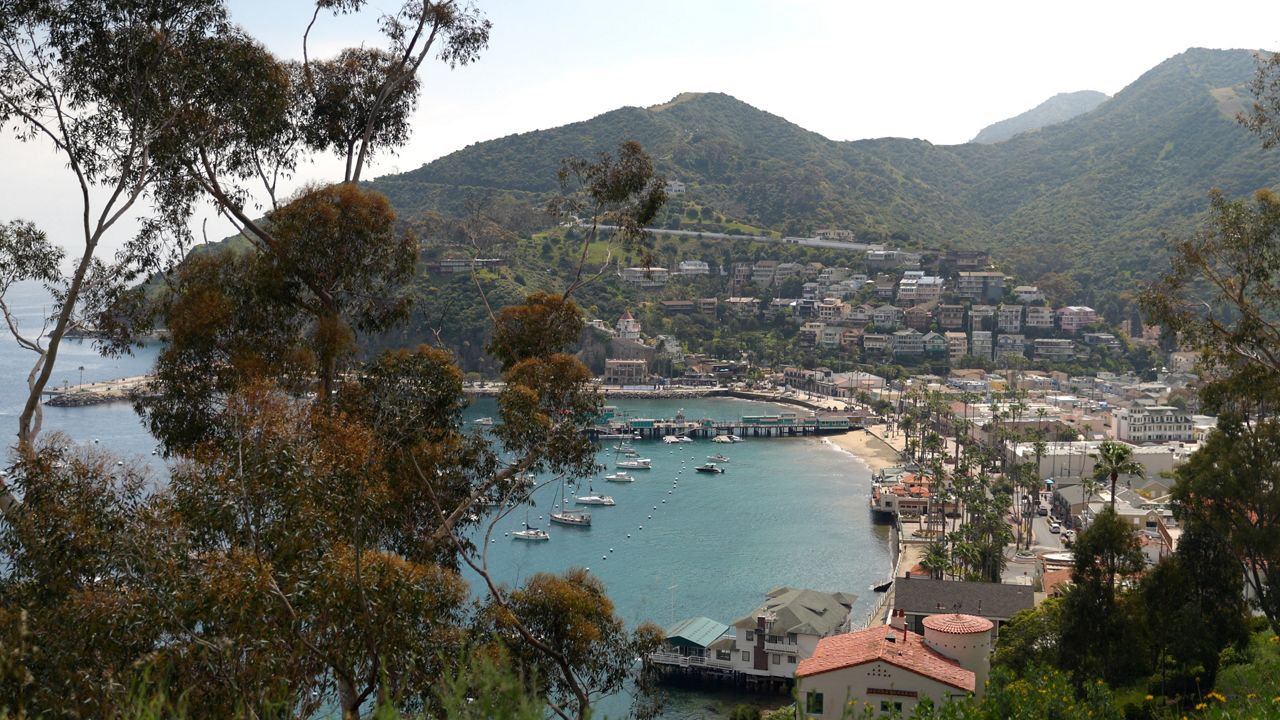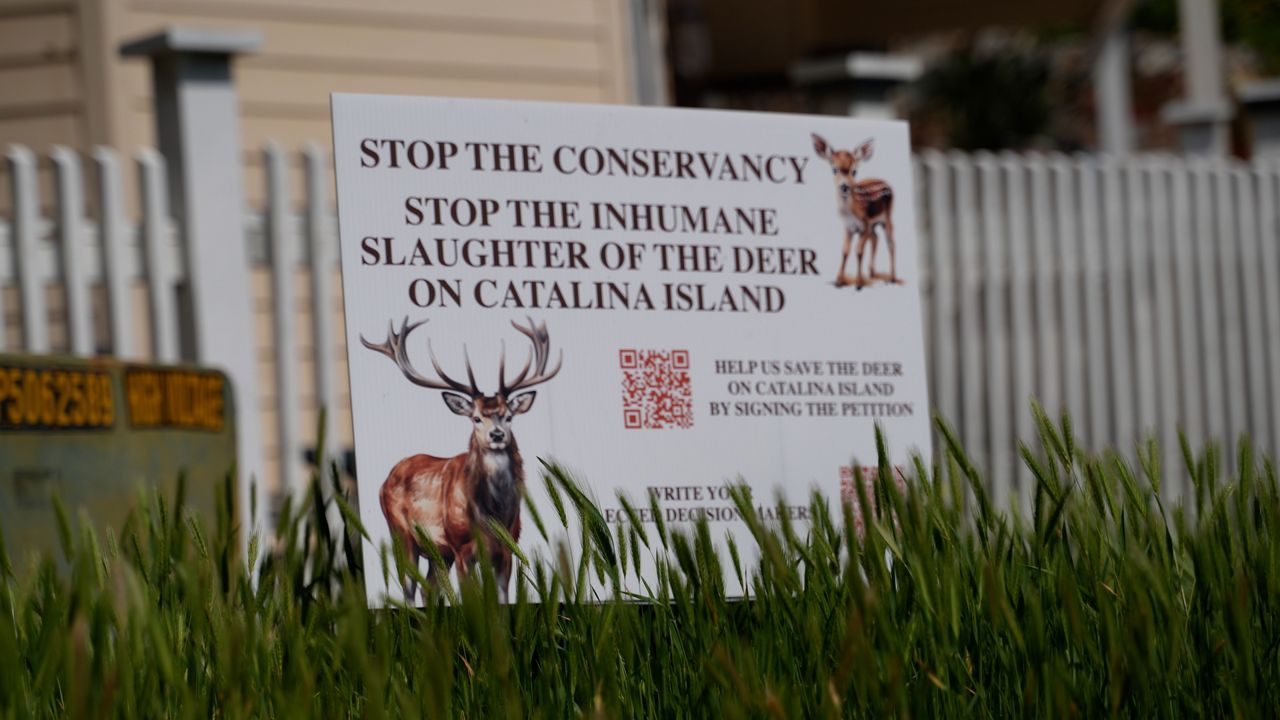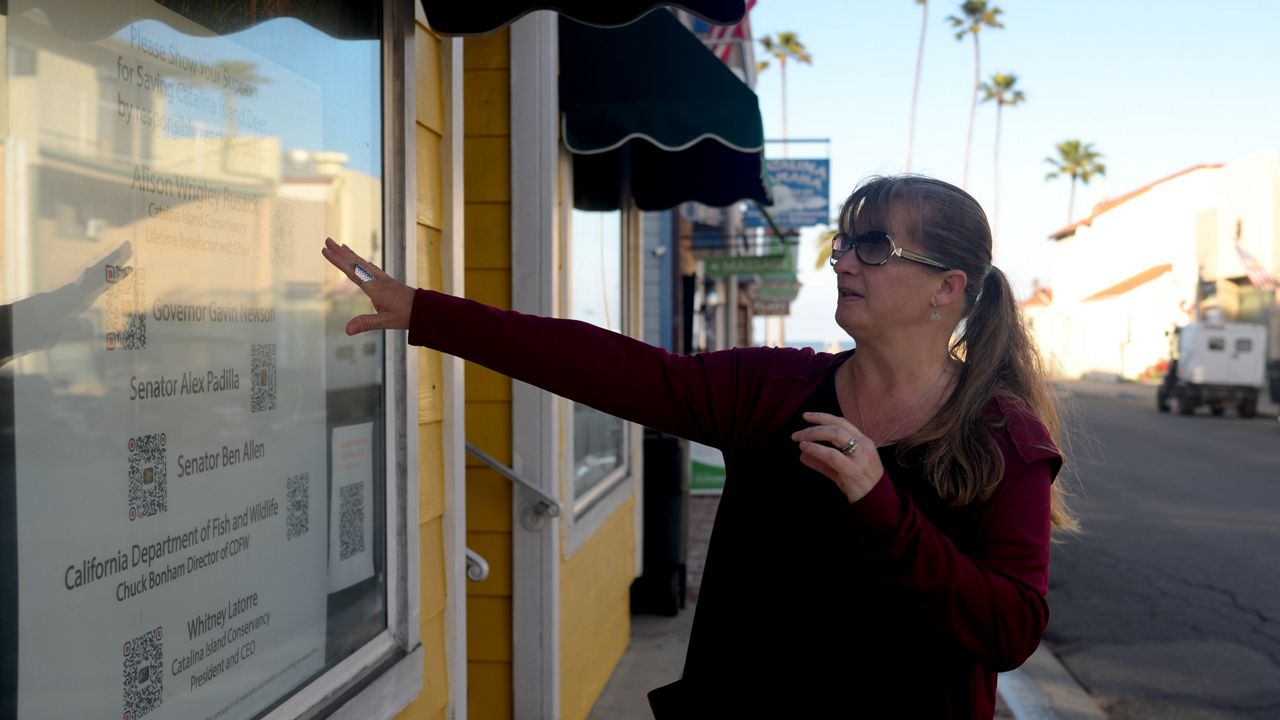About 100 years ago, 18 mule deer were transported onto Catalina Island to increase local hunting opportunities. Thanks to a lack of natural predators, the deer population has since exploded to an estimated 2,000 individuals according to the Catalina Island Conservancy, a private land trust that owns and stewards 88% of the island.
The Conservancy says those deer have wreaked havoc on the local ecosystem by outcompeteing native animals and over-browsing native plant species, leaving behind invasive and wildfire-prone vegetation like flax-leaf broom.
In an effort to restore the island’s ecosystem, the Conservancy is now pursuing a plan that has sparked frustration and protest among some locals: killing the entire deer population using helicopter-mounted hunters.
Thirty miles off the coast of Long Beach, Catalina Island's unique geology juts out of the Pacific Ocean. Its one-of-a-kind ecosystem has long made it a favorite of scientists like Lauren Dennhardt, senior director of conservation at the Conservancy.
“This island is really special. There’s 60 plants and animals that are found here and nowhere else in the world. As climate change intensifies, this is a place that really does preserve species to a higher degree than other locations as long as you properly steward it," Dennhardt said.

That stewardship involves removing invasive plants, researching and fostering native species, and managing the non-native animal populations that were introduced to the island about a century ago. For example, the Conservancy launched a contraceptive program in 2009 that reduced the island’s bison population from a high of over 500 individuals to about 90 today.
According to the Conservancy, the bison graze on invasive grasses, which makes their ecological impact somewhat negligible compared to that of the island’s deer.
By over-browsing native plant species, mule deer allow invasive and wildfire-prone grasses to grow across the island, according to Dennhardt. Researchers have linked a similar dynamic to last year’s devastating Maui fire.
According to Dennhardt, the Conservancy considered a number of management strategies to minimize the deer’s ecological impact, most of which they determined to be unfeasible or insufficient before arriving at their aerial hunting proposal.
For example, shipping the deer off-island was found to be impossible because of the species’ large population and susceptibility to capture myopathy, an often fatal, stress-induced condition that some wild animals develop when confined.
Dennhardt said the plan was developed by analyzing previously applied strategies, like the aerial hunting program that eradicated Catalina Island’s goat population in the 1990s. Even still, she said arriving at that methodology was not easy.

“Us biologists, we love wildlife, so we don’t take these decisions lightly. None of us get into the field to do things like this. Sometimes, you end up having to make really difficult decisions for the ecological integrity of the whole,” Dennhardt said.
Some locals, like Wendy Hernandez, a member of the Coalition Against the Slaughter of Catalina Deer, are vocally opposed to the plan.
Hernandez said that the plan is wantonly violent, that the deer are an essential part of the Catalina Island experience, that eradicating the species from the island would negatively impact tourism, and that the evidence behind claims of their negative ecological impact is weak.
She also claimed that the Conservancy has not been honestly communicating with islanders.
“They have not presented any evidence to prove that the deer are even a problem. We definitely feel like there’s other reasons why they’re wanting to do this,” Hernandez said.
Those proposed reasons range from protecting a small vineyard which was established in 1995 by a member of the Wrigley family, who once owned the entire island, to exercising unchecked control over island management. Hernandez also pointed to previously denied applications to argue that the proposed deer culling was unnecessary. Though the island’s population hovers around 4,000, petitions against the proposed deer eradication have received tens of thousands of signatures.
“It’s not just a group of islanders that love their home and don’t want it to change, there’s 100,000 signatures from people who don’t agree with this decision,” Hernandez said.

In addition to those signatures, several groups like Safari Club International, California Rifle and Pistol Association, and the Catalina Island Humane Society have come out against the Conservancy’s plan.
The Conservancy refuted claims of insufficient scientific evidence, linking numerous studies on their website that outline the deer’s ecological impact and the methodology they used to arrive at their aerial hunting proposal. Several organizations, including the American Association of Wildlife Veterinarians, Center for Biological Diversity, U.S. Department of the Interior, and UCLA, have written letters in support of the aerial hunting strategy.
Dennhardt said the Conservancy has also made good-faith efforts to communicate with the public, hosting a community forum in January at which the removal proposal was outlined and islanders were encouraged to submit questions regarding the plan. The Conservancy published a video of the event and a 28-page document of questions and answers from the forum, but Hernandez maintained the forum was an attempt by the Conservancy to “control the narrative.”
Though there is disagreement on how to manage natural resources, Dennhardt said she knows everybody wants Catalina Island to flourish.
Even still, she said, getting rid of the mule deer is an essential step toward achieving a thriving island ecosystem and hopes more folks will come to realize the environmental necessity of the Conservancy’s aerial hunting proposal.
“It’s way more than deer versus plants. It’s invasive deer, not doing well on an island versus an entire ecosystem that could be preserved for future generations that might be completely lost not only here, but on the mainland as well,” Dennhardt said.
The California Department of Fish and Wildlife is still reviewing the Conservancy’s permit application to move forward with the deer removal, so there is no timeline for the eradication effort just yet. Until then, the Conservancy plans to continue restoring the island’s habitat through the many other means they regularly employ. As for Hernandez, she said she plans to continue protesting the aerial hunting proposal however she can, including organizing a demonstration in front of next month’s Annual Catalina Island Conservancy Ball.
Even still, Dennhardt is confident in the Conservancy’s ability to properly manage the ecosystem into the future, even if that means facing local backlash in the short term.











